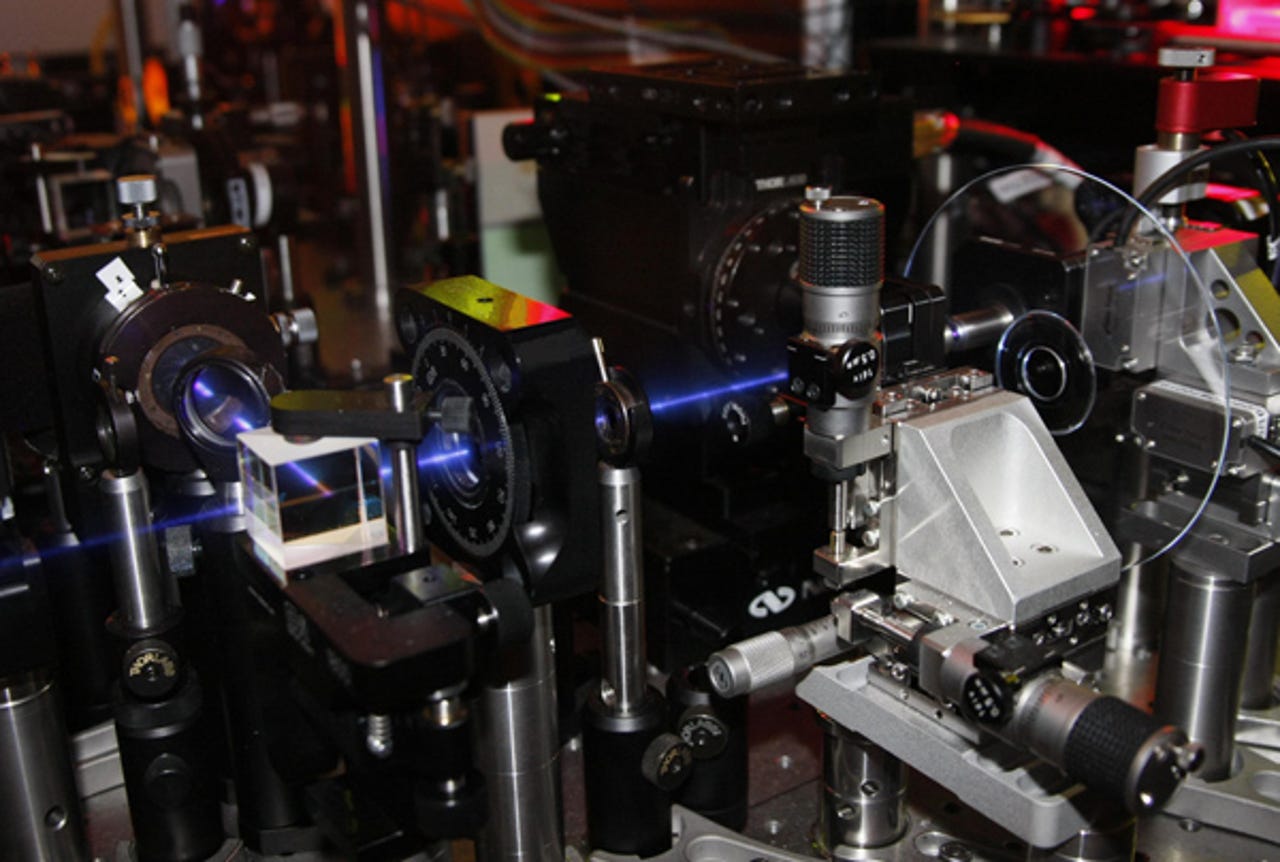Gallery: GE develops 500GB holographic drive

After years of trying, GE says that it has developed micro-holographic material that records data at the same speed as Blu-ray disks - using Blu-ray-type technology. This has enabled the company to build a 500GB holographic storage disk that can hold about 20 full-length Blu-ray movies.
For more on GE's new halographic disks, read Robin Harris's blog.
Credit: GE

Data density is theoretically unlimited. By varying the angle between the reference and illumination beams - or the angle of the media - hundreds of holograms can be stored in the same physical area.
Credit: GE
Photographic media has the longest proven lifespan - over a century - of any modern media. Since there’s no physical contact you can read the media millions of times with no degradation.
Credit: GE
A small fragment of a hologram can reconstruct the entire data image. A scratch isn’t fatal.
One of the pioneers in hologram storage was InPhase Technologies which went out of business in 2010 after investing 9 years and about $100 million into research. InPhase couldn't keep up with the year-by-year increases in storage needs and its storage devices could only run about as fast as a thumb drive.
Here's how the company described the hologram recording process:
"Light from a single laser beam is split into two beams, the signal beam (which carries the data) and the reference beam. The hologram is formed where these two beams intersect in the recording medium. The process for encoding data onto the signal beam is accomplished by a device called a spatial light modulator (SLM). The SLM translates the electronic data of 0s and 1s into an optical “checkerboard” pattern of light and dark pixels. The data are arranged in an array or page of over one million bits. The exact number of bits is determined by the pixel count of the SLM."
Credit: InPhase Technologies
And this is the process to read data:
In order to read the data, the reference beam deflects off the hologram thus reconstructing the stored information. This hologram is then projected onto a detector that reads the entire data page of over one million bits at once. This parallel read out of data provides holography with its fast transfer rates.
Credit: InPhase Technologies